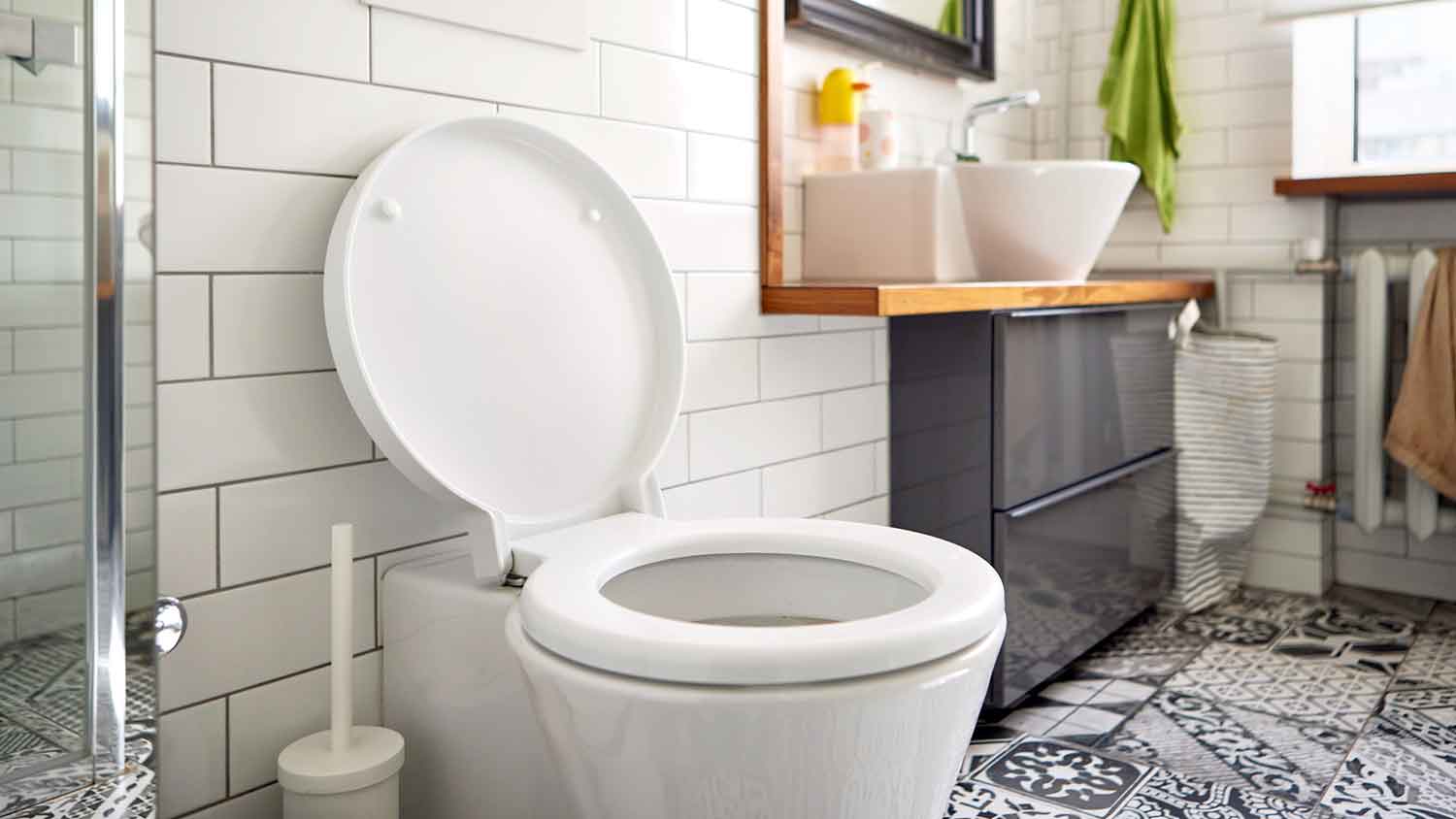5 Solutions for Fixing a Toilet That Won't Flush
These easy toilet fixes will flush your troubles away


- Plunger
- Bucket
- Towels
- New toilet fill valve (optional)
- New toilet flapper (optional)
- New toilet flush lever (optional)
A non-functioning toilet is a problem that affects the entire household. If nothing happens when you push down on your toilet handle, several issues could be causing the problem. Fortunately, troubleshooting it can be quite simple. Follow the steps in this guide to get your toilet flushing again.
Prepping to Fix a Toilet That Won’t Flush
Before you begin toilet repairs, keep in mind that it may be a messy job. Have some towels nearby to clean up spills and clear the area of any items that could get damaged by water. If the solution is simple, like turning a valve or adjusting a mechanism, you won’t pay anything to fix your toilet. However, if you need to replace a valve or seal, expect to spend between $10 and $20.
5 Steps to Fix a Toilet That Won’t Flush
In general, if your toilet won’t flush, either your toilet tank water or toilet bowl water is low or there’s a clog. These steps will help you fix the problem.
Check the Water Supply to Your Toilet
 Photo: hansgeel / Adobe Stock
Photo: hansgeel / Adobe StockOpen up the lid on your toilet tank to check the water level—it should be about 1 inch below the overflow tube. If the water level gets too low, your toilet will no longer be able to flush.
This could happen if the water supply to your toilet gets shut off. Make sure the supply valve, located at the base of your toilet—either near the floor or fixed to the wall—is in the open position.
If the valve is open, make sure your home’s water supply is active. Run a faucet in your bathroom to confirm you have an active water supply from your utility company.
Inspect the Inlet Fill Valve
When you flush a toilet, the fill valve opens up to bring water back into the toilet’s tank. If the fill valve is not positioned correctly, is touching the side of the tank, or is otherwise faulty, the tank will not maintain the correct water level.
Try adjusting the position of the fill valve so that it’s perfectly straight. If that does not correct the problem, you may need to replace the fill valve entirely, which you DIY, or hire a plumber for the job.
Check for Clogs in the Drain
 Photo: New Africa / Adobe Stock
Photo: New Africa / Adobe StockAn obvious culprit for a toilet that won’t flush is a clogged drainpipe. Your toilet can’t drain if there are obstructions in the way.
There are a few different DIY methods to unclog a toilet, including pouring hot water into the toilet bowl, using a plunger, or even using cleaning products like dish soap.
“It’s not usually the bowl that’s low; it’s usually the water level inside the tank that’s low,” says Joseph Wood, Expert Review Board member, Master Plumber, and Founder of Boston Standard Company. “If the bowl's water is low, it’s probably clogged.”
Replace the Flush Valve Flapper
If the first three steps did not fix your toilet, check the flush valve flapper inside your toilet’s tank—look for a red, rubber gasket. This flapper lifts up when your toilet flushes and allows fresh water to enter the toilet bowl.
If the flapper is damaged or deteriorated, it will not maintain a proper seal and will not keep water in your toilet’s tank. Replace the toilet flapper to stop this from happening.
Adjust the Handle Lift Chain
 Photo: jovkovski1969 / Adobe Stock
Photo: jovkovski1969 / Adobe StockA chain connects your toilet’s handle to the flush valve flapper. If the chain becomes loose or detaches, your toilet simply won’t flush. Fortunately, this is an easy issue to resolve.
If the chain is disconnected, hook it back into its position, with the flushing lever at one end and the flapper valve at the other. If there’s too much slack in the chain, tighten it by connecting it with a closer chain link. If the chain is not in good condition, replace it with a new one.
If your toilet still isn’t flushing after troubleshooting with these steps, it’s best to reach out to a local plumber to take on the task.
DIY Fixing a Toilet That Won’t Flush vs. Hiring a Pro
Diagnosing the problem with a toilet that doesn’t flush is certainly feasible for the average homeowner. You will need to open up your toilet’s tank and adjust or replace the mechanisms inside. Replacing any valves or seals will cost between $10 and $20.
If you’d rather not get up close and personal with your toilet, that’s completely understandable. Reach out to a pro to get your toilet flushing again. The average cost to repair a toilet is about $240 if you call a pro but it could range from $150 to $350, depending on the issue.





- Gas Plumbers
- Plumbing Repairs
- Sump Pump Installation
- Wood & Pellet Stove Repair
- Shower Repair
- Wood Stove Services
- Emergency Plumbers
- Fire Sprinkler Contractors
- Perc Test Companies
- Toilet Repair & Installation
- Boiler Repair
- Sewer Line Repair
- Faucet Repair
- Main Drain Camera Companies
- Foundation Drain Installation
- French Drains
- Bathtub Replacement
- Subcontractors
- Storm Drain Contractors
- Affordable Plumbing
- Plumbing & Heating Companies
- Bathroom Repair Services
- Sink Installation
- Commercial Plumber
- Barndominium Builders
- Water Line Repair
- Faucet Installation
- Water Line Installation
- Leak Detection











